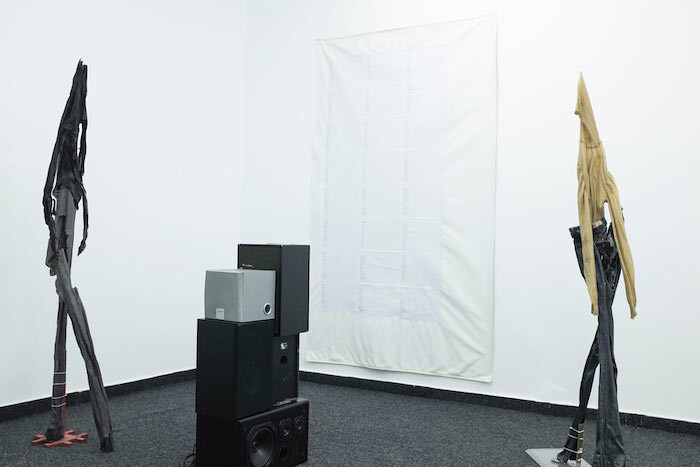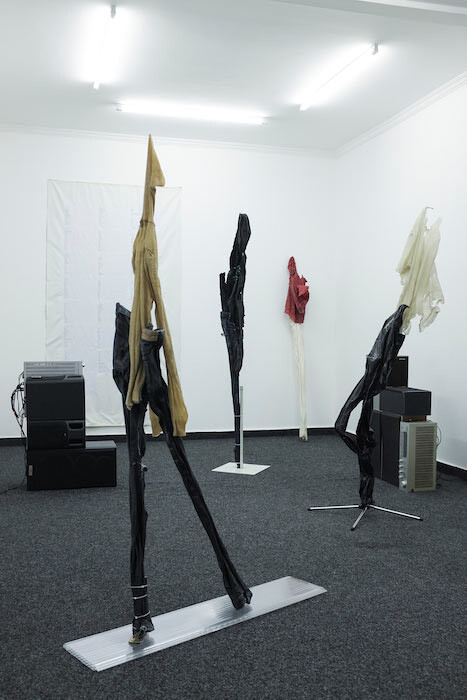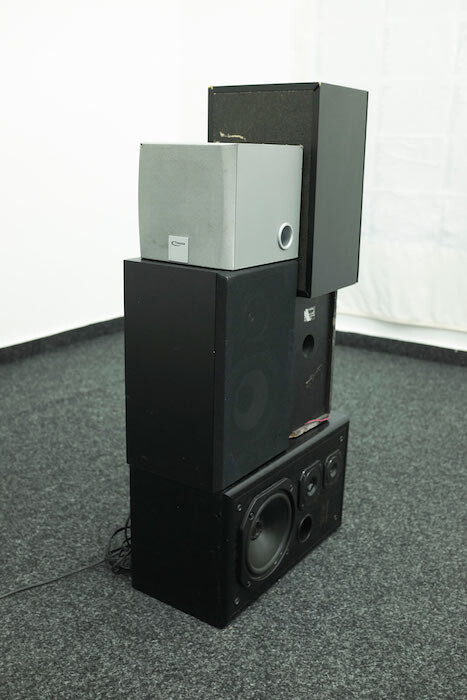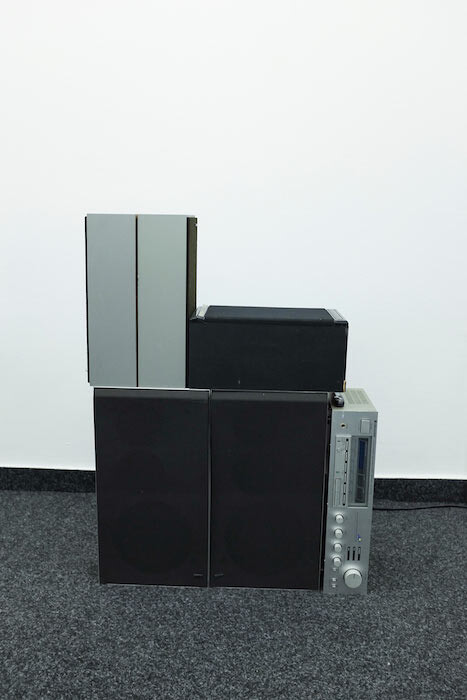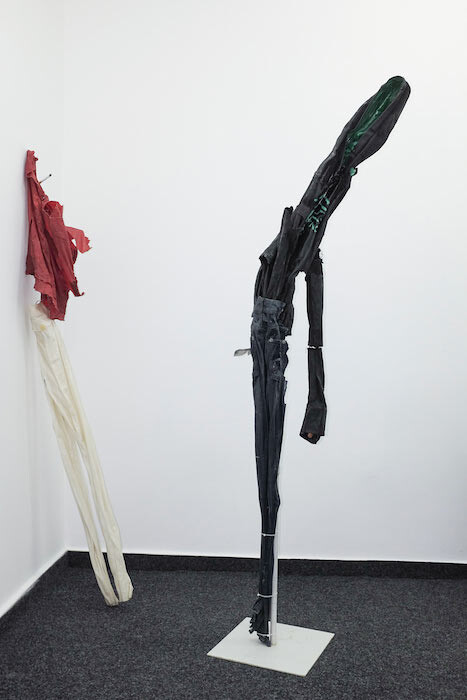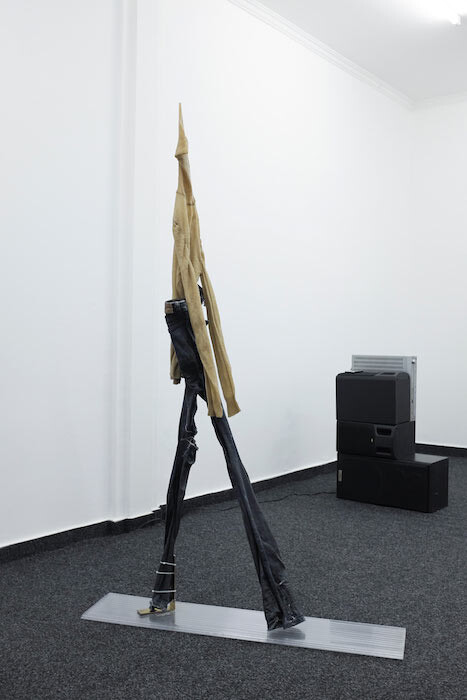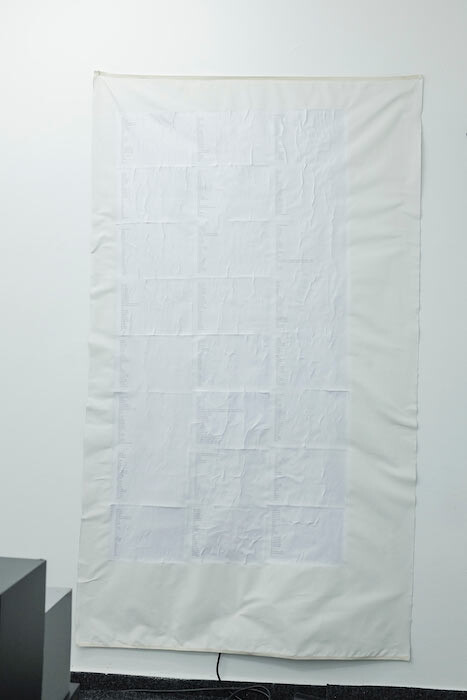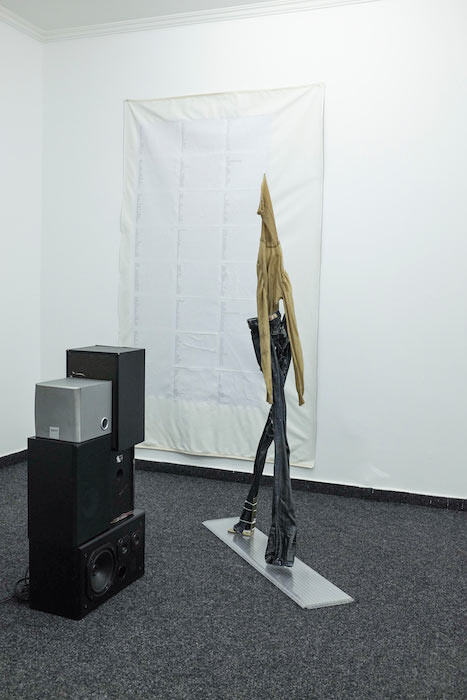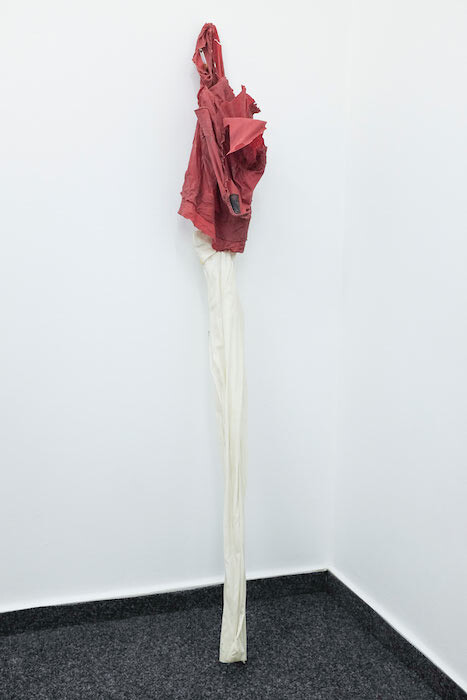The end of Mother Theresa Boulevard, a pedestrian street in downtown Pristina, is marked by the slightly run-down Grand Hotel Prishtina and its weird twin, a post-war attachment to the main building. It is a sunny Saturday afternoon, summer has definitely arrived, and excited teenagers dressed up for their school prom are gathered in front of the hotel that was once the pride of Pristina, marking the beat of its social life. During the struggle for liberation, the Grand Hotel was first a press office for the international media and then the headquarters for Serbian paramilitary troops. Buildings around the public square stand for the many faces and phases of a recent, heavy history. Crossing the street, down by the busy Metro Cafe, a backyard hosts the freshly opened project space Lambdalambdalambda, an initiative of Viennese curatorial duo Isabella Ritter and Katharina Schendl. Currently on view is “Daily Business,” a collaboration between Tobias Spichtig and Paolo Thorsen-Nagel. In its close vicinity are the state television studio, the iconic National Library built in 1982 by the Croatian architect Andrija Mutnjakovic with an imposing Brutalist design, and the Kosova National Art Gallery. Everything around the scene is part of its meaning: a multiverse that exists somewhere between everyday events and our perception of them.
While daily business as we know it goes on outside, inside the gallery (which was previously a bookshop), one encounters what appear to be the remains of a long party that hasn’t really ended. Spichtig’s anthropomorphic figures (all Untitled (Ghost), 2015), like bodies frozen in motion, are made of resin and second-hand clothing. Playing with an iconography of phantoms, their spatial choreography is open to a variety of interpretations.
At the same time, Sprichtig and composer Thorsen-Nagel’s collaborative sculpture, titled Ruin the Landscape (2015), assembles various speakers to circulate an edgy soundtrack of uneven sound surfaces. The musical composition works as an inconsistent radio frequency, channeling sound from different sources, constantly interrupting any attempt on the viewer’s part to form any personal or collective attachments to the scene. The surrounding narrative material, provided by Sprichtig—a short, untitled narrative printed on a gallery handout, and Untitled (Guest List) (2015), the gallery’s mailing list (printed onto A4 sheets of paper and abstracted onto a new wall piece made in Pristina)—plays a similar role: their unlikely appearance complicates any assured readings of the ongoing conversations between the ghostly figures and sound sculptures. And most importantly, the composition of the scene engenders a certain democracy of materials—in other words, no hierarchy exists between words, resin, and music.
In the opening of his famous BBC television program Ways of Seeing (1972), John Berger explains the nature of reading images: “The process of seeing paintings or seeing anything else is less spontaneous and natural than we tend to believe. A large part of seeing depends on habit and convention.”1 An immediate human reaction in a new encounter is thus densely textured by cycles of anticipation, attachment, and identification. We feel an urge to name the ghosts, shaping them into conventional forms. “Daily Business” instead stages the acts and trajectories of reading in a phantasmic way, imagining the “somewhere else” between an image and its various readings. In its spiritual materiality, the image comes forward unexpected and demystified. Aby Warburg once wrote that his kaleidoscopic image collection the Mnemosyne Atlas (1924–1929) is a “ghost story for adults.” It invents a kind of phantasmic science of the image or a ghost dance of images 2 that are animated by different readings across time and space that come together in a choreography of elective affinities. It is such a ghost dance of images that seems to drive Spichtig and Thorsen-Nagel towards a search for open collaborative forms. Their ongoing conversation is a modest and clear-minded exercise around the ways of seeing and reading images, leaving gaps for the viewer’s own elective affinities beyond habit and convention. Phantoms are part of the everyday multiverse, not only in Kosovo.
From the link: https://www.youtube.com/watch?v=0pDE4VX_9Kk.
Brian Dillon, “Collected Works,” Frieze, Issue 80 (January-February 2004), retrieved from http://www.frieze.com/issue/article/collected_works/.
